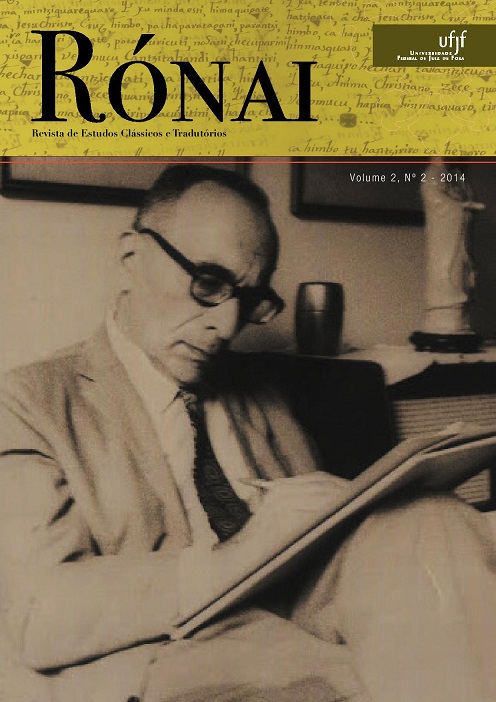Is there life after death in the Coliseum?
Keywords:
Power, violence, spectacle, poetryAbstract
A show at the Coliseum is argument enough in favor of the idea that reality overcomes fiction. Blood won in the arena, more than horror and violence, is the consecration of the imperial power, which submitts savagery, executes the traitor, surpasses the one who dares to defy its Roman superiority. The execution under state sponsorship is not intended to figure the theater of sympathy, but to be affirmation of the right of life and death. The poet Martial will be presented in his celebrating verses of “Caesareo Amphitheatro”. This paper aims to understand which relations can be established between the intrinsic values of poetry and political projects implicit in the building of that celebrated place.
Downloads
References
Carcopino, J. (1997) La Vita Quotidiana a Roma, Roma-Bari: Editori Laterza.
Coleman, K. M. (1990) ‘Fatal Charades: Roman Executions Staged as Mythological Enactments’, Journal of Roman Studies 80: 44–73.
Dumézil, Georges (1974) La Religion Romaine Archaïque, Paris: Payot Dupont. F. (1985) L’Acteur-roi, ou, Le Théâtre dans la Rome antique, Paris: Les Belles Lettres
—— (1989) Daily Life in Ancient Rome, trans. C. Woodall, Oxford: Basil Blackwell.
Futrell, Alison (2006) The Roman Games, Malden: Blackwell.
Kyle, Donald G. (1998) Spectacles Of Death In Ancient Rome, New York: Routledge.
Marcial (2004), Epigramas, trad.; José Guillén, Zaragoza: Institución Fernando El católico.
—— (1919) Epigrams, London: Wilian Heinemann.
Reggiani, A. M. (ed.) (1988) Anfiteatro Flavio: immagine, testimonianze, spettacoli, Rome: Edizioni Quasar.
Sánchez, Juan Antonio Jiménez (1998) Poder Imperial y Espectáculos en Occidente durante la Antigüedad Tardía, tesis doctoral, Barcelona: Universidad de Barcelona.
Scullard, H. H. (1981) Festivals and Ceremonies of the Roman Republic, Ithaca: Cornell University Press.
Toynbee, J. M. C. (1971) Death and Burial in the Roman World, Ithaca: Cornell University Press.
Veyne, P. (1990) Bread and Circuses: Historical Sociology and Political Pluralism, abridged with an Introduction by O. Murray, trans. B. Pearce, London: Allen Lane, Penguin (Le Pain et le cirque: Sociologie historique d’un pluralisme politique, Paris: Editions du Seuil, 1976).
Downloads
Published
How to Cite
Issue
Section
License
Copyright (c) 2015 Rónai – Revista de Estudos Clássicos e Tradutórios

This work is licensed under a Creative Commons Attribution 4.0 International License.
Copyright
The authors of the published contributions agree with the following items:
1. The authors keep the copyright and convey to the journal the right of first publication, the work being licensed under a Creative Commons Attribution License 4.0 International.
2. The authors are allowed and stimulated to publicize and distribute their work online after the publication in the journal, recognizing first publication in this journal.
3. The authors of the approved works authorize the journal to distribute their content, after publication, for reproduction in content indexes, virtual libraries and similars.
For more information about Creative Commons Attribution License 4.0 International, please, go to: https://creativecommons.org/licenses/by/4.0/deed.en
Editorial exemption
The authors of the published contributions are entirely and exclusively responsible for their contents. Its content does not represent an official position of Rónai - Revista de Estudos Clássicos e Tradutórios neither of Faculdade de Letras da Universidade Federal de Juiz de Fora or their partner institutions.



